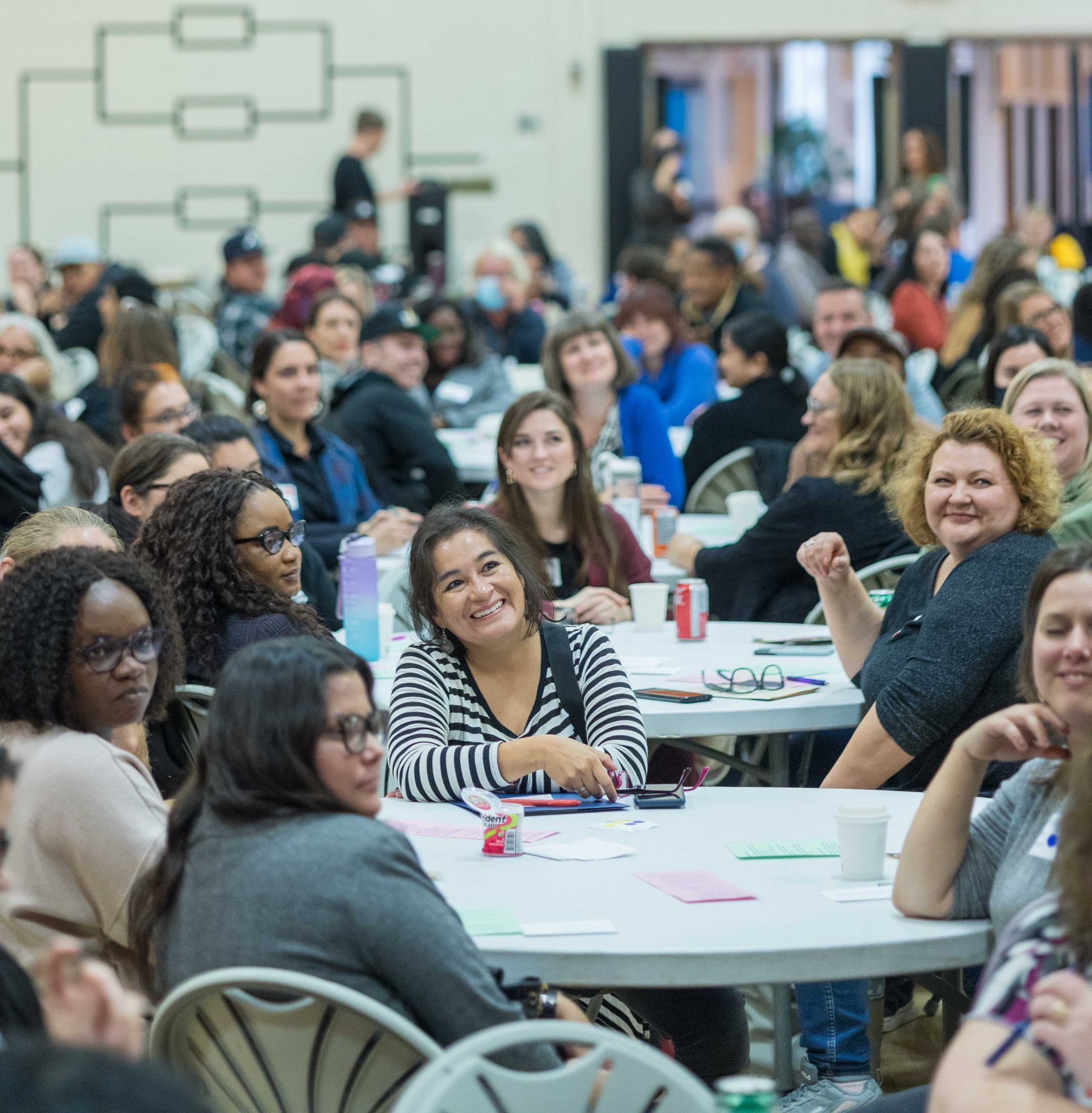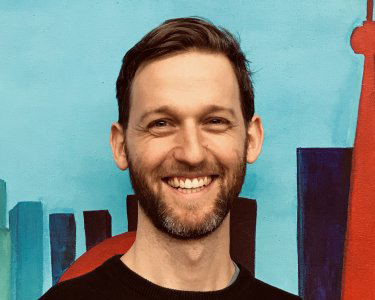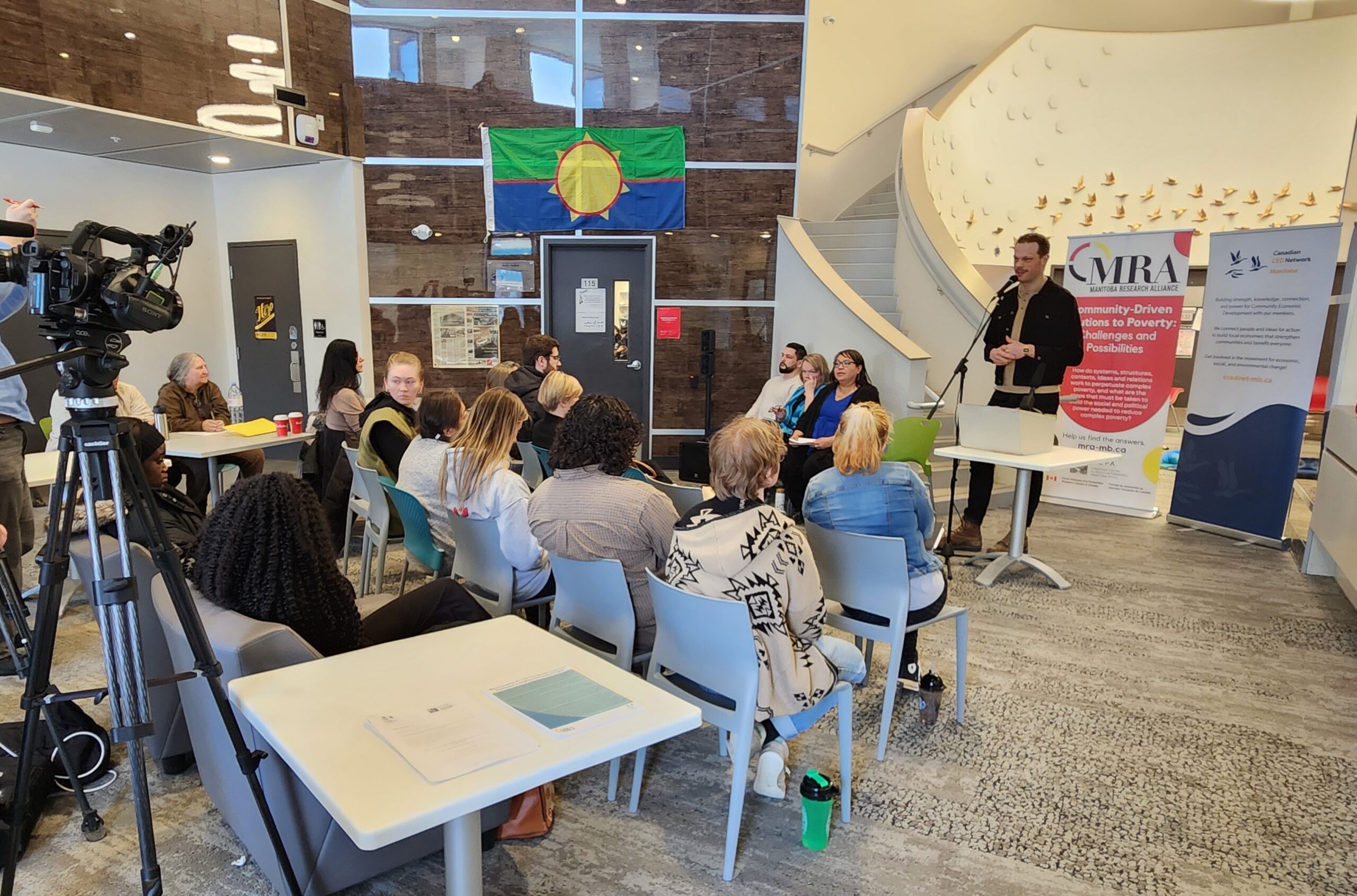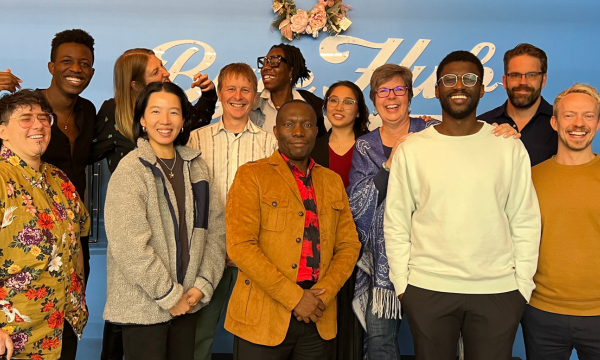
CCEDNet’s Theory of Change states that “We believe that how we organize our relationships in a place matters, and that community economies can be sites of transformation.”
So, if our goal is to harness the transformative power of community economies, how should we organize our relationships in a place? What works? What doesn’t? And how do we channel those relationships into advocacy that can tangibly improve people’s lives?
Michael Barkman has devoted much of his career to answering these questions in both theory and practice. As CCEDNet’s Manitoba Network Manager, one of Michael’s primary responsibilities is to lead public policy advocacy through coalitions and direct government relations, and supporting CCEDNet’s Manitoba Learns program. He also has years of experience as an organizer for student rights, civil liberties, and anti-poverty movements.
At CCEDNet MB’s recent event, “Tiny Talks: Advocacy Training in Small Bites,” Michael delivered a session entitled How to Advocate and Organize. We asked him to share some insights from his session, as well as from his years of experience doing place-based organizing for community economic development (CED).
This interview has been edited for length and clarity.
What are some strategies, ideas, and/or inspirations you hope the audience of How to Advocate and Organize gained from the session?
To get to our vision requires us to demand and seek systemic change and policy change. We can do a lot of transformative work at a community level but we also need governments to play their part in helping to get closer to our vision. Beyond that, if our work is only focused on addressing symptoms and putting band-aids on the challenges of the current global economy, I don’t think we’ll ever fully realize the change we want to see.
So that requires that we organize – not only to build amazing and innovative community economic development solutions, but also to organize together so that governments act differently.
The hope of the session was to convey to audience members that they could and should be doing community organizing and advocacy. They already have the skills and talents to do it. You don’t need to be an expert in public policy. By learning and working together we can add to our skills to create change.
And the other message that I think was really trying to get across to people was the importance of coalition-based work and collaborative work. 500 voices saying 500 different things can be easy for governments to ignore – or to divide and conquer – but 500 voices saying one consistent thing becomes a lot harder to ignore.
Of course, it doesn’t always work that easily. Even if you have thousands and thousands and thousands of people pushing for the same thing, governments can still find ways to ignore that. But still the principle holds true: by working collaboratively in coalition and pushing for similar goals, we can go a lot further than we otherwise would be able to.
What are your guiding principles for creating strong community-based relationships that can support effective community organizing?
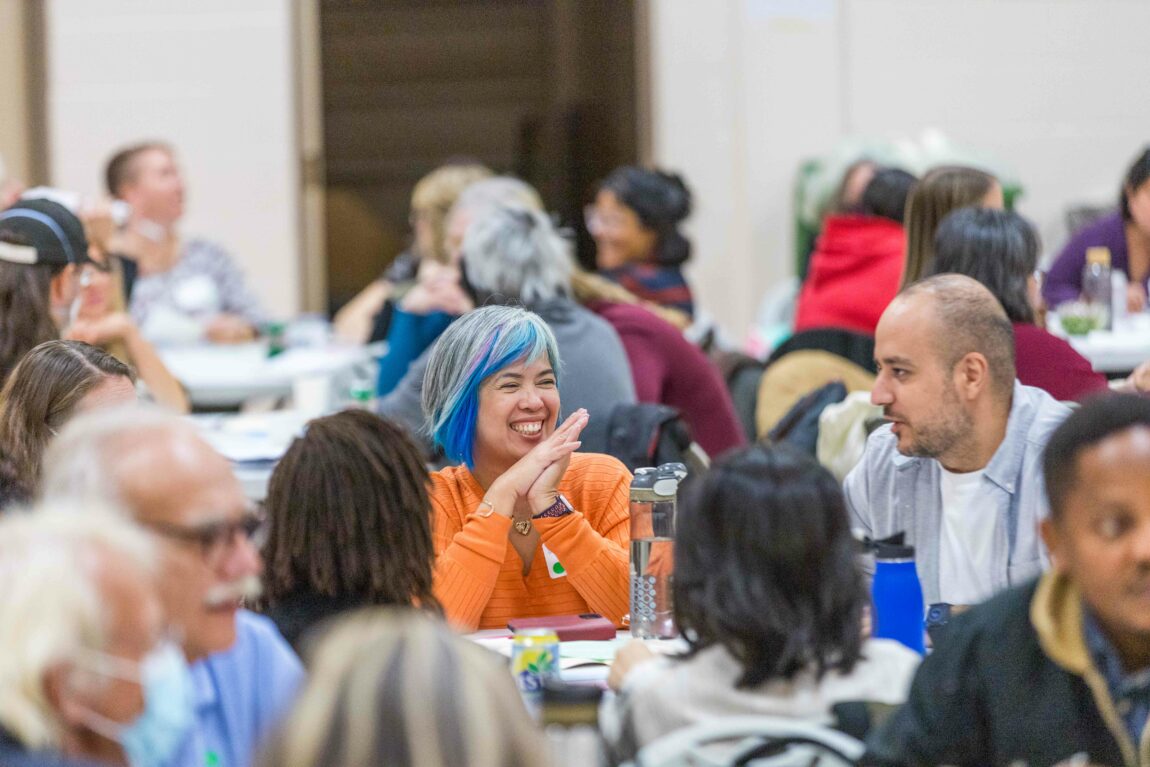
The first thing that comes to mind is wisdom from adrienne maree brown – that things move at the speed of trust. This is important because strong relationships are at the heart of good organizing work, and that comes through deep progress with each other. And I think that in my mind looks like a few things.
One is that it’s a collaborative practice of working with others. I think sometimes collaboration gets seen as a skill that you either have or don’t, which is a narrative that just isn’t true. Collaborative skills are something that you can and should strengthen, sharpen, grow, and develop.
Another principle is belief in the power and importance of good facilitation. It really matters! It can’t and won’t solve everything – for example, deep conflict may require a more formal mediation or conflict transformation process. But I think there are a lot of times when community organizing is broken down due to a lack of good facilitation. Often, people bring potentially conflicting ideas and desires for change to the table, so there are a lot of times when strong facilitation can build better relationships, develop trust, and find and establish common ground quickly.
Also, good facilitation and strengthening collaborative relationships can help ensure that more diverse voices can be included. You know, as a white man in community organizing work, I think a lot about how to create spaces where people from diverse communities feel included, welcomed, and valued. If I want to help dismantle white supremacy in these spaces, I always need to be focused on building trust and being in good relationships. And strong facilitation can ensure that processes are in place to centre the voices of people who might otherwise be marginalized.
How do you then channel those relationships into effective advocacy?
For this to happen, it’s important for people to first feel like they’re connected to an understanding of their own role in social change work. There are different theoretical models that can be helpful here, but the key thing is just knowing that you can play a really useful part in a bigger picture – and that you don’t need to be everything or do everything. In fact, trying to do more than your own role can lead to burnouts and bad relationships.
To figure out what those roles are, it’s important for people to know what skills and talents they bring to the table. These are capacities that can be leveraged as assets, and can help create roles that people feel connected to and invested in.
Once there’s an understanding of the roles that people can play, then it’s helpful to create an advocacy strategy, a campaign plan, or a community organizing plan. The strategy should have clear ideas about who might be taking a lead on what and who’s involved in sort of which piece of work based on what they want to do and what they feel like their strengths are.
Once the strategy is set, you want to try sticking to it as best as possible. Of course things may change and some plans will have to shift, but channeling our relationships into a solid strategy can give you a longer view than just the next thing that you’re doing or the next event that’s happening. It can help you answer the question, what comes after that?
In terms of what actions to take, I’m from the school of thought that tactics follow strategy. Ask yourself, “what can we do that will allow us to achieve our goals in the fastest and most effective ways possible?” Will using the levers of government help you achieve your vision? If so, it might make sense for your coalition to organize around participation in things like committee meetings and budget consultations. But some strategies call for other tactics, like direct action. It all depends on the context, the issues, and your coalition’s vision and strategy.
Whatever your tactics may be, your approach to narrative is important. How do you communicate your message effectively? How can you tell stories that invite more people in and get them connected to work?
Finally, no matter what your tactics are, it’s important to understand the decision-making cycles that impact your ability to achieve your vision. Inform yourself of the timeframes for relevant consultations, meetings, etc. at all levels of government, and work these into your advocacy strategy. Whether you’re in the halls of power and speaking at one of these meetings, or organizing a protest outside of it, these are important opportunities to leverage and demonstrate your collective power.
What is unique about doing organizing and advocacy as it relates to community economic development (CED)?
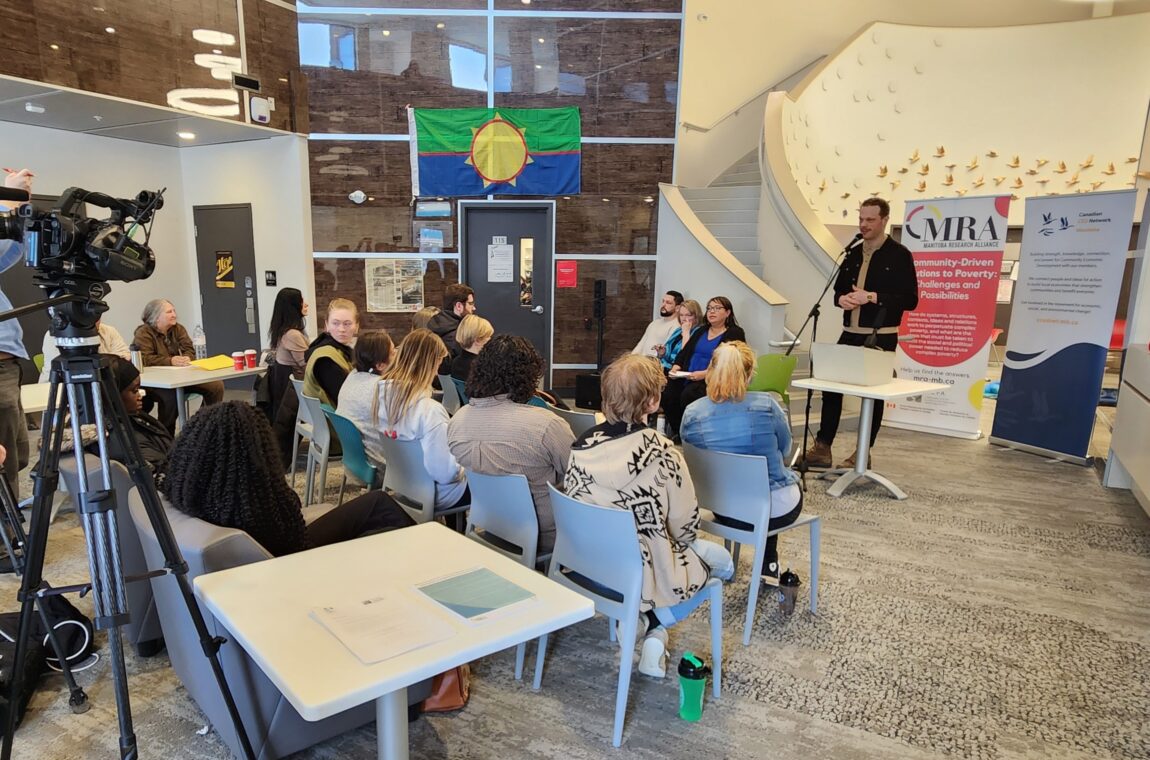
A lot of people in our network are doing really awesome place-based, local building up of community economies in ways that are really transformative. In my mind, we also need the state (in whatever sense that is) to truly build longer term transformation as well. For CED practitioners, part of why we offer training is to help them think about what they need from governments in order to create transformation – not to ignore that realm, even though it can be overwhelming. And many times, when people drawn into this work come from more of an entrepreneurial or innovator background, they’re not automatically thinking about how we can get governments involved in our vision of building local, fair economies.
If the goals are around economic justice, economic reconciliation, and economic transformation and toward building a more fair, sustainable, inclusive economy, then this vision comes with policy goals and social shifts in people’s mindsets. However, the organizing strategies and approaches required won’t necessarily be different from other campaigns for justice. I think about the climate movement, and it’s really awesome seeing the connections made between climate justice and anti-poverty work, for example. Or how we’re looking to integrate climate solutions into the foundations of community economic development work, and how the CED sector is pushing governments to support those solutions in their climate plans as well.
In other words, people who are already practicing CED shouldn’t forget or ignore the importance of making community organizing and advocacy a part of their work. And on the other side of the spectrum, we want community organizers to infuse their campaigns for justice with the transformative power of their community economies. We want to break down those silos — bringing community organizing to CED and bringing CED to community organizing.
What inspires you as you do this work?
My grandparents, who were and still are (my grandfather is 94) really strong peace activists. In the 60’s and 70’s they organized groups of teachers to go into the US to protest nuclear proliferation, and also went into the USSR on an educators’ friendship mission. They were followed by CSIS when they got home! Anyhow, I grew up in a home where social justice was important and I got to see a lot of community organizing happening on the ground. My grandma had the CBC callback number and the newspaper op-ed information laminated on her fridge — it was amazing to see this strong woman who was always using her voice for change.
I was recently talking to my grandpa and one of his old friends, and the friend said something like, “hope is not an action; it’s a commitment.” To hear this wisdom coming from these two longtime activists in their late 80s and early 90s was powerful. It’s a commitment to hope for change for something different, even if that change feels very far off. It helped me want to commit to doing my part for change for the next 60 years myself. I know my hope will waver many times but I will stay committed to envisioning change in their honour, building upon their work.

